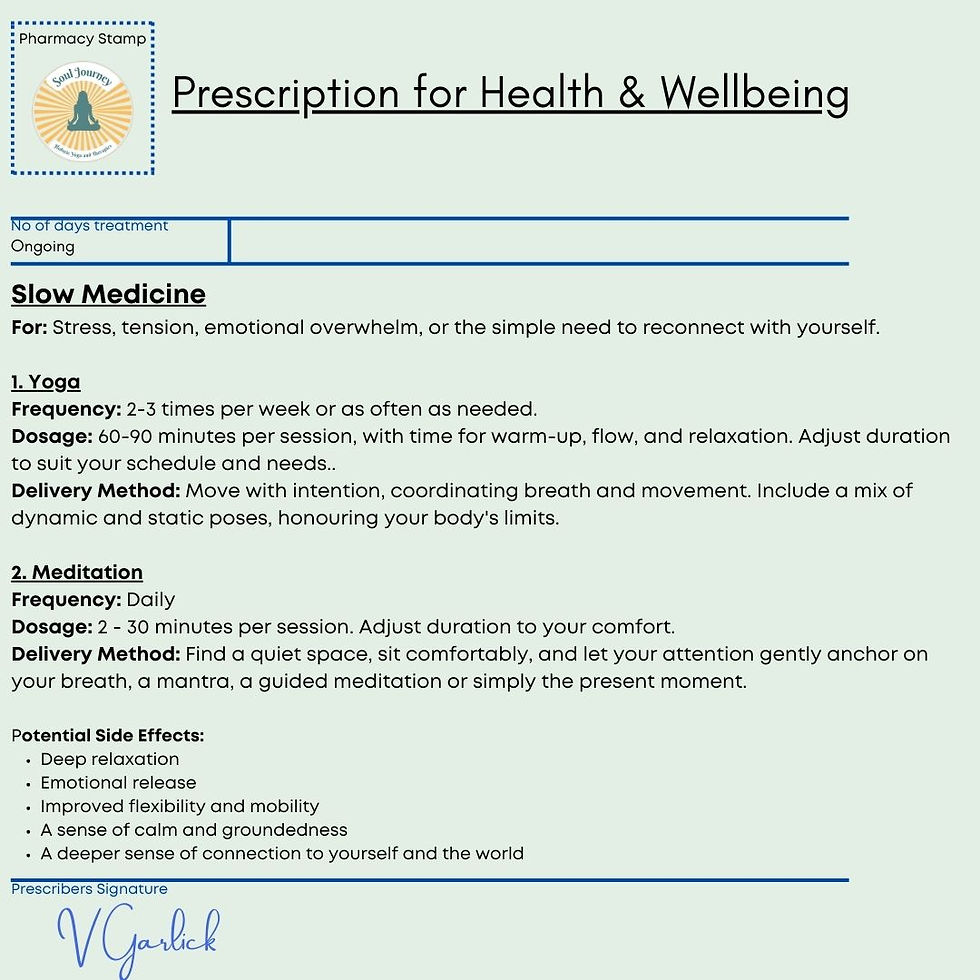Settle Into Your Centre: Working with the Hara Point to Ease Anxiety
- sjholisticyoga
- Sep 26
- 2 min read
When life feels unsettled, we often find ourselves pulled upwards — into the busyness of the mind, the racing of the heart, the shallows of the breath. Yet within us lies a place of quiet gravity, a deep anchor that can steady us when anxiety or fear begins to rise. In yogic and Eastern traditions, this place is called the hara (or lower dantian): two or three finger-widths below the navel, at the body’s true centre of balance.

To work with the hara is to return to the centre of the self. It is a practice of gathering our scattered energy back into the core, where strength and calm naturally dwell.
A simple practice
You can use this practice whenever you notice fear or restlessness, or simply as a daily ritual to cultivate steadiness.
Find your posture. Sit, stand, or lie down with a long spine and soft jaw.
Place your hands. Rest one or both palms over the lower belly, just below the navel.
Breathe lower. Inhale through the nose for a count of four. Exhale for six to eight. Feel the belly gently rise into your hands, then soften as you breathe out.
Soften the out-breath. Allow each exhale to be slightly longer than the inhale, sending a signal of safety through the body.
Imagine warmth. Picture a small glowing stone resting in a bowl behind the navel, or roots dropping down into the earth.
Stay for six to ten breaths. Notice any warmth, weight, or quiet that emerges
That’s all. Just a few breaths at the hara point can be enough to bring the nervous system back into balance.
Pocket versions
For those moments when life won’t allow a longer pause:
One-minute reset. Hand on the hara → three slow breaths (in for four, out for six) → whisper inwardly lower, slower, softer.
Walking practice. Place a hand on your belly as you walk, matching each step to the rhythm of your out-breath.
Bedtime anchor. Lying on your side, rest your top hand on the hara. Count ten easy breaths.
A note on chakras
If you like to frame your practice within the chakra system, the hara point closely aligns with the Sacral Chakra (Svadhisthana). This chakra, located just below the navel, is connected with the element of water and with themes of flow, creativity, emotional balance, and relationship. When anxiety or fear disturbs our sense of ease, resting awareness at the hara can help restore Svadhisthana’s natural qualities of steadiness and openness.
Some practitioners also sense the grounding presence of the Root Chakra (Muladhara) in this practice. Whether you imagine it as sacral flow or root-like stability, the hara invites us into a deeper trust in the body’s own wisdom.
Why it matters
Anxiety and fear are not enemies to be banished, but signals that the body longs for steadiness. The hara gives us a direct path home — to a place below the swirl of thoughts, where the breath deepens, the belly softens, and we can feel held once more.
Practised daily, this simple touch can remind you that you are not at one with the storms in your mind: you are rooted, steady, and whole.






Comments